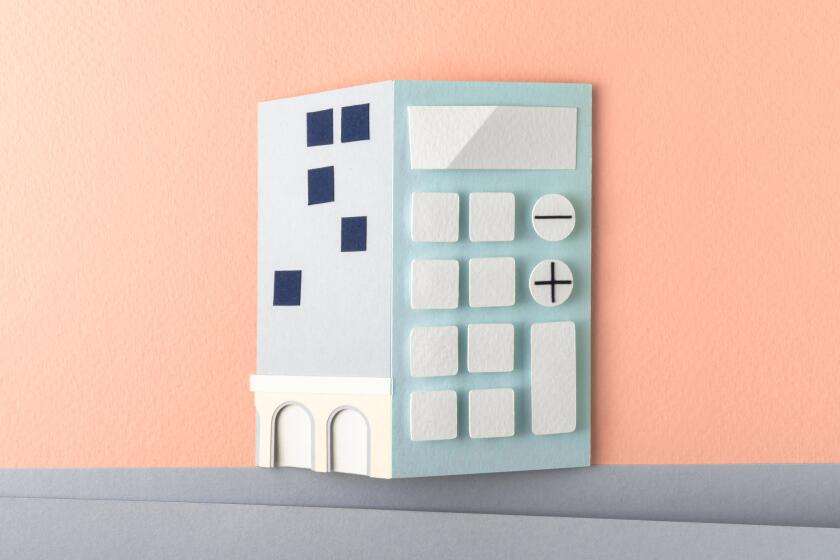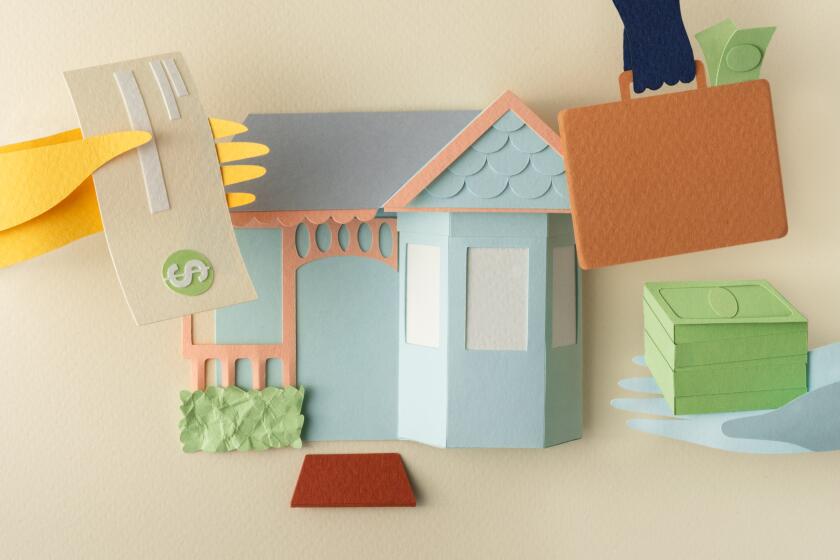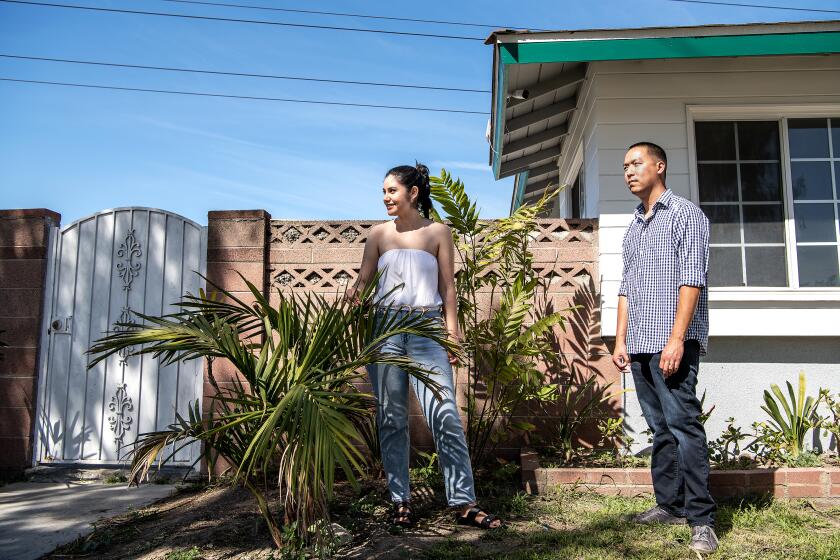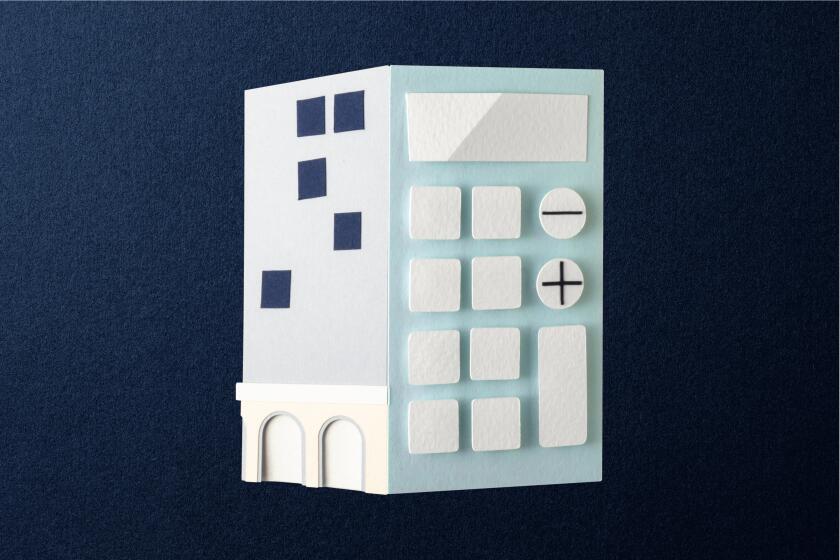Mortgage interest rates are rising. If you’re looking at adjustable-rate loans, know the risks
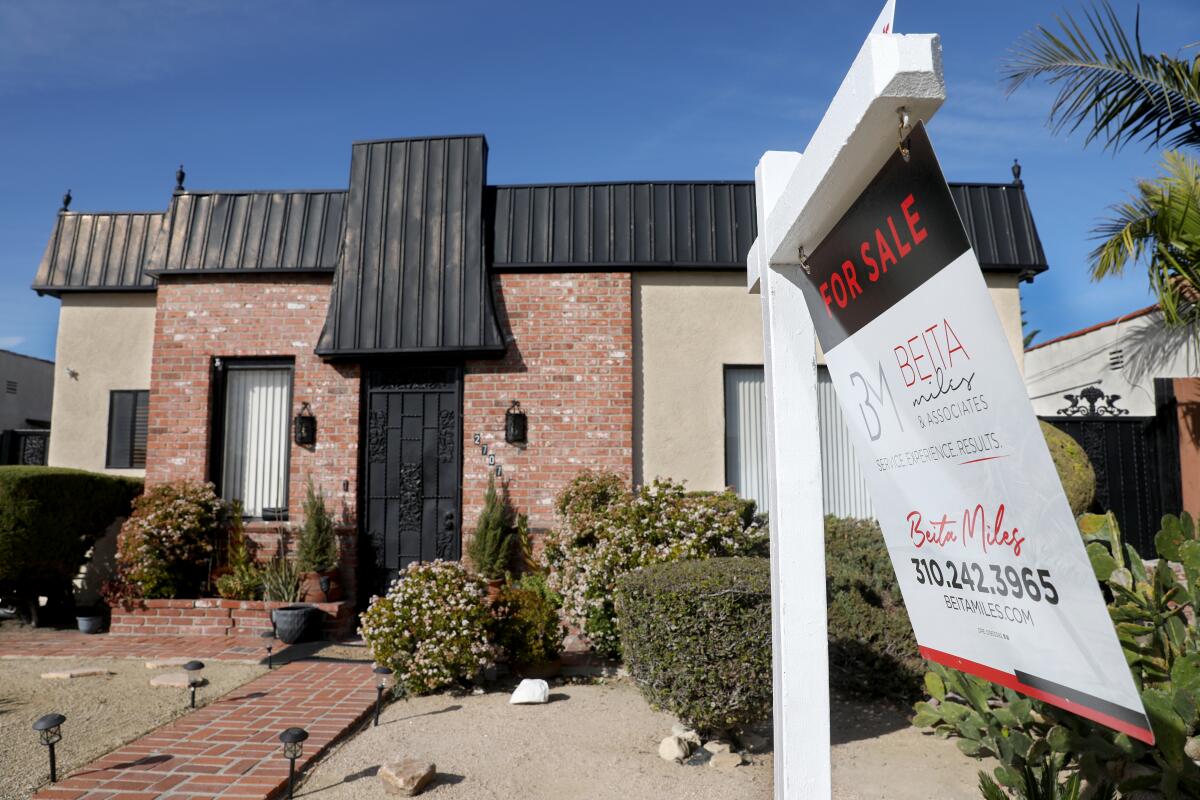
A few years after risky mortgages and related investments led to a global financial collapse, the Federal Reserve put out a handbook to help consumers make smarter choices about their home loan options. The focus was on adjustable-rate mortgages, whose exotic variants were among the prime culprits in the meltdown.
“To compare two ARMs or to compare an ARM with a fixed-rate mortgage,” the handbook states, “you need to know about indexes, margins, discounts, caps on rates and payments, negative amortization, payment options, and recasting (recalculating) your loan.”
Wait, what?
In plain English, the Fed was cautioning home buyers that it’s harder to predict the cost of an adjustable-rate mortgage than a plain vanilla fixed-rate mortgage. You have to understand not just your current payments but also how the lender will calculate the amount you will pay after the interest rate starts to adjust. You also have to understand how the principal amount you owe may grow instead of shrink, and what your potential offramps might be.
It’s a lot to think about, which is one reason consumers flocked to simpler fixed-rate mortgages as the interest rate for 30-year fixed mortgages fell from about 6.5% at the height of the last recession to 2.7% in December 2020.
But rates for those mortgages have bounced back up since then, and on Friday they hit their highest level since 2018: 4.9%, according to Bankrate.com. That’s an increase of about $625 per month on a $500,000 loan.
Make no mistake, rates remain far lower than they were in the latter part of the 20th century, and a few percentage points below their levels in the 2000s. Nevertheless, with home prices so high in Southern California, buyers may well be tempted by an adjustable-rate loan, which may cost a few hundred dollars less than a fixed-rate mortgage — at first. Here are a few things to consider when deciding whether an alternative to a fixed-rate mortgage is worth the risk.
The Great SoCal House Hunt
Safer vs. less safe ARMs
One good thing for home buyers today is that some of the most complex and inscrutable loans either are no longer on the market or are less widely available. That’s because the subprime mortgage fiasco led lawmakers to reduce the legal protection for lenders, who were making profits off of the loans they issued regardless of whether they were repaid.
“Everybody was making money on the front end,” said Sarah Bolling Mancini, a staff attorney with the National Consumer Law Center. The demand from investors was so strong, she added, it created a thirst for loans that made it hard for borrowers to tell how unaffordable the payments would be.
The 2010 Dodd-Frank Wall Street Reform and Consumer Protection Act requires lenders to check a buyer’s ability to repay and bars them from issuing some of the riskiest kinds of loans, said Eric Stein, a former Treasury Department official now at the Center for Responsible Lending. That’s why you won’t find any more “liar loans,” or mortgages that didn’t require borrowers to show proof of their financial health.
The law also gave lenders an incentive to offer “qualified mortgages,” or loans designed to be easy for borrowers to understand and to have predictable payments, Stein said. An ARM could fit that definition, he said, but only if it holds rates steady for at least the first five years and is “fully amortizing” — in other words, the home buyer steadily pays off the amount borrowed as well as interest charges.
The initial rate for a five-year ARM isn’t as low as you would have gotten with the one- and two-year ARMs that were popular before Dodd-Frank. In fact, it probably won’t be much less than the rate for a fixed-rate loan.
“What all this comes down to is that fixed-rate mortgages are safer, but ARMs are much safer than they were, assuming that someone gets a qualified mortgage, which primarily is what lenders are offering,” Stein said.
One drawback to the shift toward qualified mortgages is that it has made it harder for Black, Latino and low-income Americans to qualify for loans, said Ira Rheingold, executive director of the National Assn. of Consumer Advocates. That’s because of the way lenders measure a borrower’s ability to repay, he said.
In response, Fannie Mae and Freddie Mac, the government-backed enterprises that buy mortgages from lenders, are looking at different types of loans and different ways to evaluate borrowers’ risks, Rheingold said. The question, he said, is “how do we expand homeownership opportunities ... without creating loans that are going to do more harm than good?”
A mortgage will be the largest sum of money you ever borrow. How do you find a good lender? What is a conforming loan? What’s a rate lock? We explain.
What are you actually paying for?
Some lenders continue to offer ARMs that aren’t qualifying mortgages. That’s why it’s crucial to understand what you’re getting when the promise of lower monthly payments tempts you to sign up for a loan that doesn’t fall into the safer category.
The lowest-payment loans typically shave the monthly total by not paying down principal — the amount you borrowed. Instead, you’ll pay just the interest charges on the loan (“interest-only ARMs”). Or in the case of “negative amortization” loans (also known as “payment optional” mortgages), you’ll pay less than the amount you owe in interest, causing you to build up more debt.
These loans aren’t well suited for people who are purchasing a home to live in for the long term unless they’re anticipating a big increase in their income. Instead, they’re designed to buy time, keeping costs low while the new homeowner tries to flip the house or to line up other financing.
If you use an interest-only ARM, you could be hit with a double whammy once the interest-only period ends: Your interest rate will adjust and you’ll have to start paying down your principal. And because you put off those principal payments for several years, you’ll have to pay more per month than if you had been paying down principal from the start.
For instance, on a $500,000 loan with a 5% initial interest rate, you’ll pay $600 less per month with an interest-only mortgage. But when the initial period ends, your payments will jump by $840, or more if the interest rate goes up.
In addition, you won’t be actively building up equity in your home while making interest-only payments. Once the initial period ends, how much equity you hold will depend on how large your down payment was and whether the property increased in value. That, in turn, would affect your ability to refinance or obtain a home equity loan.
When property values are rising fast, though, new owners can build up equity without paying down principal. That’s the situation in many neighborhoods today, just as it was during the go-go years of the early 2000s.
Back then, negative amortization loans grew in popularity because owners could add to their debt and still sell their properties at a profit or refinance at better terms in a few years. But when the party ended and home prices started to fall, these offramps suddenly disappeared.
The Consumer Financial Protection Bureau lays out the downside this way: “A negative amortization loan can be risky because you can end up owing more on your mortgage than your home is worth. That makes it harder to sell your house because the sales price won’t be enough to pay what you owe. This can put you at risk of foreclosure if you run into trouble making your mortgage payments.”
Most people don’t buy a home with a 20% down payment. Here’s how you can put down less and get more help with down payment and closing costs.
How to compare ARMs
One number you’ll see that’s not very useful, Stein said, is an ARM’s annual percentage rate. Although the rate will factor in points and fees, which is helpful, it assumes that interest rates won’t change over the life of the loan, which is extremely improbable.
Instead, here are the variables to consider.
The Great SoCal House Hunt
Use The Times’ home-buying guide to smooth the path to your first Southern California home with step-by-step expert advice, tips from successful home buyers and more.
Initial period. That’s revealed in the first of the two numbers in an ARM’s label — for example, a “5/6 month ARM” will adjust for the first time after five years, then will adjust semiannually after that.
The shorter the length of the initial period, the lower your initial monthly payment will be. That’s because lenders will be able to adapt the loan quickly to changes in interest rates. This can work for you too — if interest rates are dropping, your rate will follow that path sooner.
But if rates are rising, these adjustments will be costly. That’s why a longer initial period is less risky when interest rates are rising — you’ll have more time to wait for interest rates to come back down before your rate changes or you refinance.
Adjustment period. This is the second number in an ARM’s label. For most ARMs it will be six months because that’s the standard set by Fannie and Freddie. The shorter the adjustment period, the more quickly your interest rate will go up or down in response to changes in the market.
Interest rate caps. ARMs typically have three different limits on how sharply rates can change over the life of the loan, according to the Consumer Financial Protection Bureau. These limits can vary from lender to lender and from loan to loan.
The first cap limits how much the rate can go up or down after the initial period ends. That’s usually two to five percentage points, the CFPB says. Then there will be a cap, commonly two percentage points, on each subsequent adjustment. And finally, there will be a cap on the total increase, which the CFPB said is usually five percentage points but may be higher.
Index. This is the number that provides the foundation for what your interest rate will be after the adjustments start. Fannie and Freddie will buy ARMs only if they’re based on the 30-day composite Secured Overnight Financing Rate, which reflects the interest rates financial institutions have been paying to borrow money overnight. That will go up or down in response to the market and the Federal Reserve’s actions (more on this later).
Nonconforming mortgages, such as jumbo loans, may still rely on a different index, such as one based on the rates for securities sold by the U.S. Treasury. But if you’re in the market for a conforming loan — that is, one that’s no larger than $970,800 for a single-family home in Los Angeles and Orange counties — the reliance on SOFR will help you make an apples-to-apples comparison.
Margin. This is the percentage added to the index to determine what your adjusted interest rate will be. Unlike the index, the margin remains constant over the life of the loan. Under Freddie Mac’s rules, the margin on a conforming loan can be one to three percentage points.
It’s important to compare a lender’s margin to its competitors’ and to the current situation. If the margin is large enough, it will guarantee that your rate will go up after the initial period even if interest rates are the same as they are today.
In fact, that was a trap often laid in the days before the subprime meltdown. “We saw a lot of ARMs that only went up,” Rheingold said. “They never went down.”
Totally Worth It
Be your money's boss! Learn how to make a budget and take control of your finances with this eight-week newsletter course.
You may occasionally receive promotional content from the Los Angeles Times.
What’s going to happen to your interest rate?
The short answer is, “Heaven only knows.”
Interest rates — including the Secured Overnight Financing Rate — are strongly influenced by the policies set by the Federal Reserve, which seeks to restrain both inflation and unemployment. Consumer prices have been rising steadily for more than a year, and the Fed said last month that it will make “ongoing increases” in its target for short-term interest rates.
Leading Fed officials expect the central bank to push its target up from the current 0.25% to a range of 2.1% to 3.6% next year, and to keep it there in 2024. In the longer run, they predict rates between 2% and 3%. What Fed policymakers actually do, however, will depend on whether the steps they’re taking now tame inflation.
The Fed’s monetary policies don’t move mortgage rates directly, but those rates do tend to go up when the central bank tightens the money supply. For example, when the Fed raised its short-term target by two percentage points in 1999 and 2000, the rate for 30-year fixed mortgages rose a similar amount.
It’s worth remembering that mortgage rates have been unusually low in recent years because the Fed kept its target at rock bottom for many years after the Great Recession, then pushed rates down again when the pandemic hit. Both of those policies were efforts to stimulate the economy and employment.
In normal times, the Fed seeks to maintain a neutral monetary policy, aiming for annual inflation of around 2%. So even if inflation hadn’t surged over the last year, the Fed would have started taking its foot off the monetary gas pedal and raised interest rates — and mortgage rates would probably have followed.
Use this calculator to get an idea of how much you can borrow, and explore which ZIP codes have a typical home price that will fit your budget.
More to Read
Sign up for Essential California
The most important California stories and recommendations in your inbox every morning.
You may occasionally receive promotional content from the Los Angeles Times.
